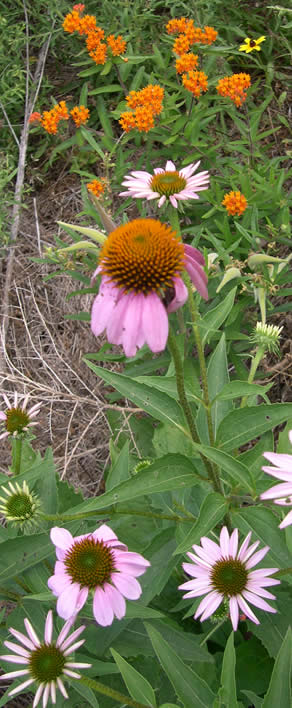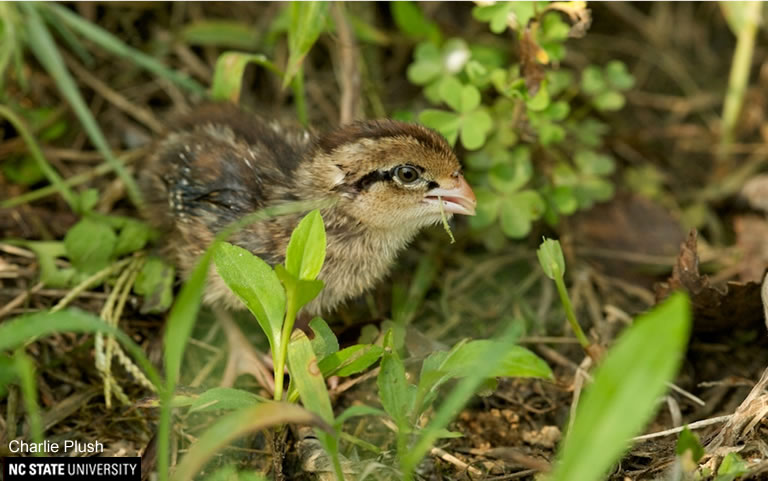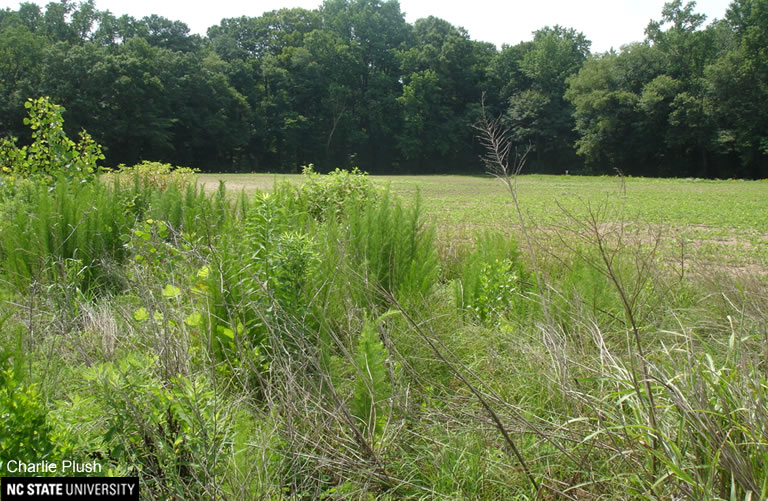Habitat Principles
go.ncsu.edu/readext?562424
en Español / em Português
El inglés es el idioma de control de esta página. En la medida en que haya algún conflicto entre la traducción al inglés y la traducción, el inglés prevalece.
Al hacer clic en el enlace de traducción se activa un servicio de traducción gratuito para convertir la página al español. Al igual que con cualquier traducción por Internet, la conversión no es sensible al contexto y puede que no traduzca el texto en su significado original. NC State Extension no garantiza la exactitud del texto traducido. Por favor, tenga en cuenta que algunas aplicaciones y/o servicios pueden no funcionar como se espera cuando se traducen.
Português
Inglês é o idioma de controle desta página. Na medida que haja algum conflito entre o texto original em Inglês e a tradução, o Inglês prevalece.
Ao clicar no link de tradução, um serviço gratuito de tradução será ativado para converter a página para o Português. Como em qualquer tradução pela internet, a conversão não é sensivel ao contexto e pode não ocorrer a tradução para o significado orginal. O serviço de Extensão da Carolina do Norte (NC State Extension) não garante a exatidão do texto traduzido. Por favor, observe que algumas funções ou serviços podem não funcionar como esperado após a tradução.
English
English is the controlling language of this page. To the extent there is any conflict between the English text and the translation, English controls.
Clicking on the translation link activates a free translation service to convert the page to Spanish. As with any Internet translation, the conversion is not context-sensitive and may not translate the text to its original meaning. NC State Extension does not guarantee the accuracy of the translated text. Please note that some applications and/or services may not function as expected when translated.
Collapse ▲What Plant Species Are Best?
 Focusing on specific plants may not be the best approach to establishing habitat. Everyone has their own preferences and goals (e.g. predators, pollinators, wildlife) with habitat creation. Instead of being overly concerned about which plant species to include in habitat, a better approach may be to focus on guiding principles.
Focusing on specific plants may not be the best approach to establishing habitat. Everyone has their own preferences and goals (e.g. predators, pollinators, wildlife) with habitat creation. Instead of being overly concerned about which plant species to include in habitat, a better approach may be to focus on guiding principles.
First, diversity is important – no one plant will provide all of your needs. For example, buckwheat has been touted as a plant that provides great habitat for beneficial insects, in part because of the variety and numbers of insects (including beneficials) that are attracted to buckwheat and feed on its nectar. Research has shown that buckwheat can greatly increase lifespan and reproduction of a variety of parasitic wasps under laboratory conditions, and in one case, under field conditions. However, in field studies buckwheat plantings cannot be shown to reduce populations of pest insects in adjacent crop fields.
Second, it’s valuable to choose diverse plants that bloom at different times so that something is always blooming on the farm.
Third, promoting native plants and vegetation ensures that you have well-adapted plants that will provide resources to native beneficials and wildlife.
Fourth, try to avoid plants that will feed pests like moths. For example, Japanese honeysuckle will preferentially feed hornworm moths. Just another reason to remove this non-native invasive, ecologically destructive species. A study conducted at the Center for Environmental Farming Systems demonstrated that some commercially sold seed mixes claiming to be beneficial insect habitat had plants, such as evening primrose, that attracted large numbers of pest fruitworm and hornworm moths.
Habitat Isn’t Just For Beneficial Insects
 As with plant species, it may not always be best to focus on habitat for just one organism. Farmland wildlife will make use of habitat areas and considering their needs such as cover (e.g. field borders should be at least 30 ft. wide), nesting areas (e.g. shrubs) and food resources (e.g. seeds from flowering plants) will make your habitat more productive.
As with plant species, it may not always be best to focus on habitat for just one organism. Farmland wildlife will make use of habitat areas and considering their needs such as cover (e.g. field borders should be at least 30 ft. wide), nesting areas (e.g. shrubs) and food resources (e.g. seeds from flowering plants) will make your habitat more productive.
Ugly is Okay When it Comes to Habitat
Neatly mowed areas offer few resources to beneficial insects or wildlife, while areas that look unkempt to us may be great habitat for wildlife provided they are not filled with exotic, invasive plants. Wildlife resource managers in North Carolina recommend that you “Farm Ugly” to enhance wildlife populations.
 For example, fallow field borders are basically weedy strips that are lightly disked roughly every 3 years to keep out woody vegetation, but are excellent and “instant” habitat for farmland gamebirds and songbirds. When you understand that neatness doesn’t equate to habitat and appreciate the value of lightly managed vegetation, then areas that are biologically productive will begin to look attractive.
For example, fallow field borders are basically weedy strips that are lightly disked roughly every 3 years to keep out woody vegetation, but are excellent and “instant” habitat for farmland gamebirds and songbirds. When you understand that neatness doesn’t equate to habitat and appreciate the value of lightly managed vegetation, then areas that are biologically productive will begin to look attractive.
What Should The Habitat Provide?
To be most effective, habitat should provide food (e.g. nectar, pollen), alternative hosts (e.g. plant feeding insects that are not pests) for when there are none in crops, nesting sites (e.g. lightly vegetated areas for ground nesting bees and wasps, shrubs for songbirds), and overwintering sites (e.g. standing vegetation, trees, leaf litter on woodland edges). Clearly, all of these values may not come from a single habitat area, and so you should look across your entire farm when you are considering habitat.
How Much Habitat Is Enough?
In general, bigger is better when it comes to individual habitat areas for both beneficials and wildlife. Although long, narrow strips of habitat or many small habitat areas may be fine for beneficial insects, keep in mind that wildlife prefer larger blocks, and narrow strips result in much higher predation of nesting birds for example. Research indicates that providing non-crop natural or semi-natural vegetation on at least 20% of a landscape will enhance populations of a variety of beneficials, including predators, parasites, and pollinators.
Where to Put the Habitat?
It is natural to want to put habitat next to the field you want to manage pests or pollinators in. This should not necessarily be the case, though. Research has shown that the larger landscape may be more important than what’s beside a field. In some cases, habitat that is a mile or more away may have an impact on insect populations in crop fields. For wildlife, as well as ground dwelling beneficials, it can be important to provide travel corridors for them to move across the landscape. Siting habitat areas adjacent to existing non-crop vegetation will help accomplish this.


